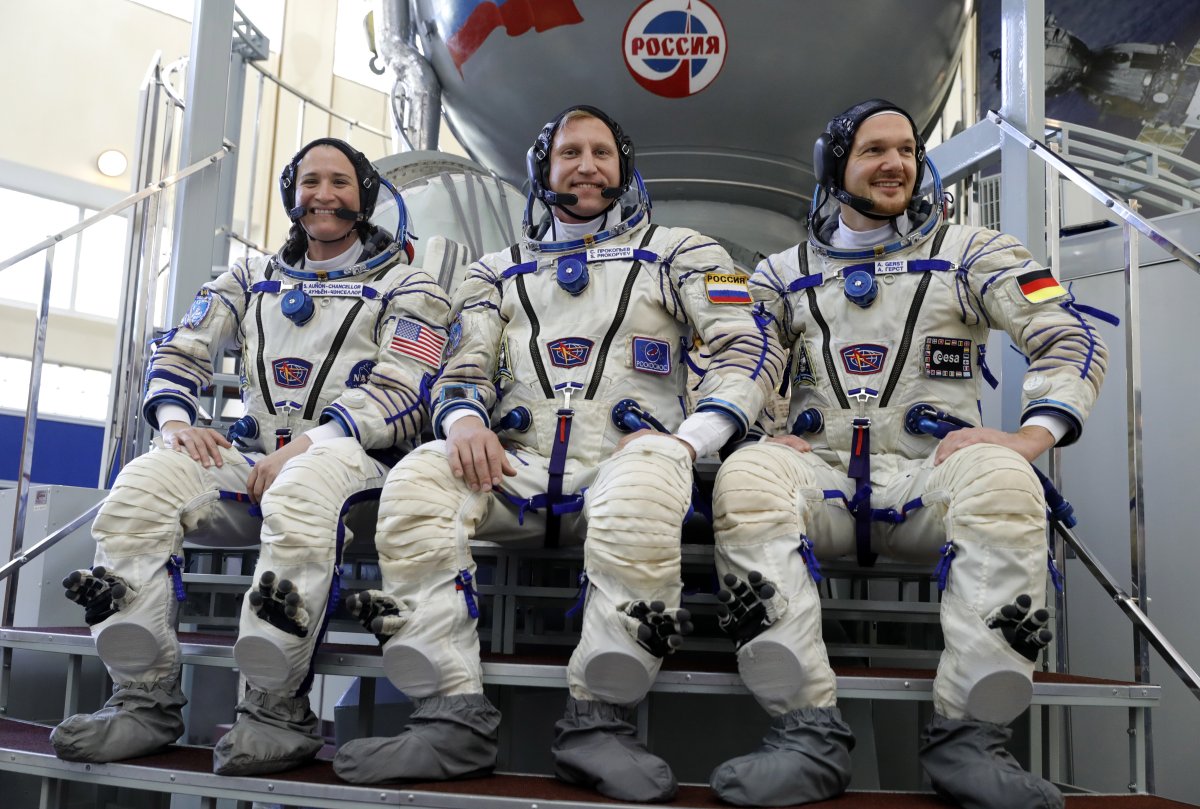Three astronauts living on the International Space Station (ISS) were set to welcome two new crew members Thursday, but the Russian Soyuz spacecraft heading there had to make an emergency landing just minutes after takeoff.

NASA astronaut Nick Hague and Russia’s Alexei Ovchinin are now safe after they were forced the make the emergency landing in Kazakhstan when a booster rocket failed.
They were on their way to the ISS, but according to former Canadian astronaut Chris Hadfield, it may take months to fix the rocket, meaning the crew members aboard the space station may be stuck there “indefinitely.”
“Their main reaction would have been one of frustration and probably anger because they have been training for a long time to get ready for this launch. And to have the rocket fail, means they are not going to space today,” Hadfield explained during a live Q&A on Periscope Thursday.
WATCH: Hadfield explains what Soyuz rocket failure means for astronauts on ISS

Three astronauts are currently living on the space station: NASA’s Serena Auñón-Chancellor, Russian cosmonaut Sergey Prokopyev and European Space Agency astronaut Alexander Gerst.
Hague and Ovchinin were scheduled to help the crew until December, when the three astronauts currently aboard were scheduled to return to Earth, according to NASA.
But that is put on hold. Russia said it is suspending manned space launches pending a probe into the booster rocket that failed.
That could affect the mission of Canadian astronaut David Saint-Jacques, who was set to be aboard the Soyuz spacecraft on Dec. 20 headed to the ISS. A spokeswoman for the Canadian Space Agency said Thursday it has not received any information about Saint-Jacques’ mission and doesn’t yet know what the impact will be on his impending launch.
‘They are basically marooned there’
Hadfield said if it was something simple and easily diagnosable, then NASA, the Russian space agency Roscosmos, and the International Space Station control team may be able to send a rocket again in December.
WATCH: NASA releases stunning timelapse images from the International Space Station

“What that means is for the three people living on the space station, they are basically marooned there indefinitely at this point until we can get another vehicle that can get out there,” Hadfield said.
He said there are two American spacecraft being built now, one by SpaceX and one by Boeing, but neither of them is ready to launch.
“They have one Soyouz up on the space station right now. They could undock and come home anytime,” Hadfield said. But, if they abandon the space station, there is no one there to fix it if something fails.
“So my expectation will be, they will prolong the time of the crew on the space station for as long as feasible … they are there for a long haul,” he said, adding that the Russia Space Agency and NASA need to start thinking about a long-term plan for the health of the crew members.
WATCH: Canadian astronaut David Saint-Jacques on training in Russia for space mission

NASA spokesperson, Kelly Humphries told Space.com that the crew members have plenty of supplies on board the station and they will continue to work.
Robotic cargo launches using U.S.-built resupply ships are also scheduled to deliver more supplies to the station in the next two months.
But astronauts onboard the space station will still be affected. For example. Hague was set to take part in spacewalks on Oct. 19 and Oct. 25 to replace batteries attached to the outside of the ISS, NASA said.
Kenny Todd, a space station manager, said the station’s three current residents can remain on board until January. If the rocket that failed remains grounded until it’s time for the astronauts to come home, Todd says flight controllers could operate the orbiting lab without anyone on board.
About the ISS
The ISS (built in stages since 1998) is a collaborative project between the national space agencies of the U.S., Canada, Japan, Russia and Europe.
Consisting of a number of modules, trusses and solar panels, the ISS operates as a space environment research laboratory, with experiments conducted by crew members.
Orbiting at an altitude of around 360 kilometres, it has been crewed since 2000 and will remain operational until at least 2020. Since 2011, it has been supplied by Soyuz and Progress spacecraft, and various automated transfer vehicles.
WATCH: Russia’s Soyuz rocket fails, makes safe emergency landing

— With a file from the Associated Press





Comments